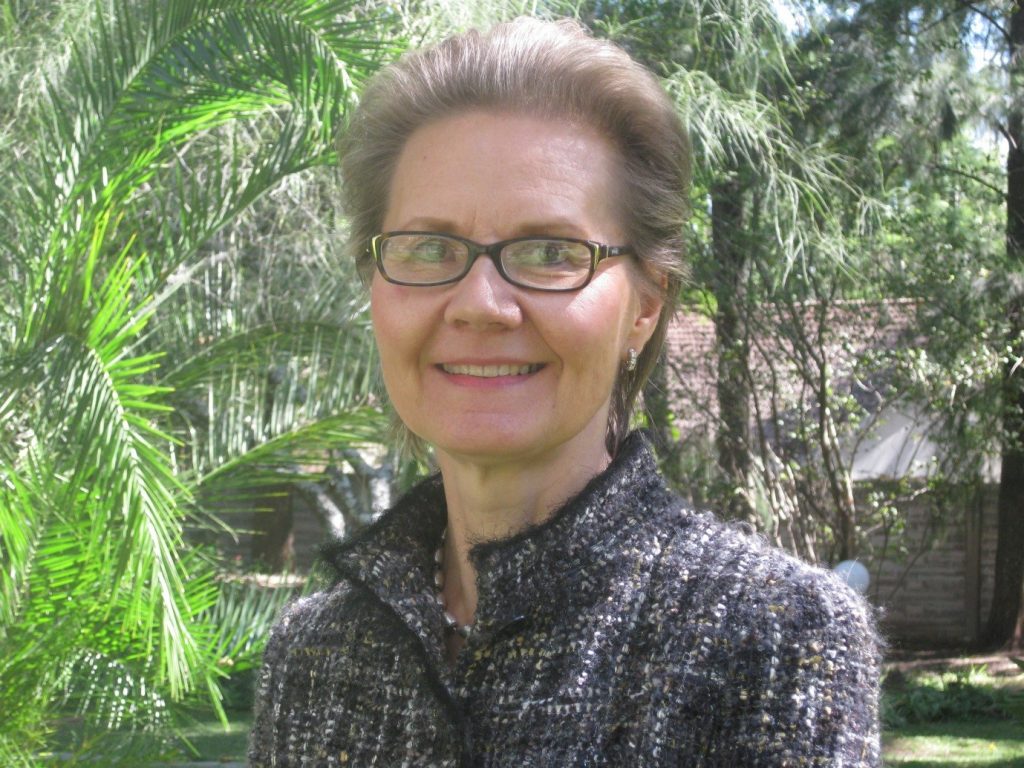“The positive impact of ART has been phenomenal, and knowing that our work is helping to bring people such enormous benefits is very rewarding.”

Dr Riitta Dlodlo’s career as a physician in Zimbabwe began in 1982 when HIV/AIDS was just beginning and tuberculosis (TB) was not yet a major problem. Ever since she has played a leading role in her country’s response to the HIV and TB epidemics; and, as The Union’s TB-HIV Programme Coordinator, she brings a depth of knowledge, experience and empathy that can only come from having been there, every step of the way.
From north to south, clinical medicine to public health
Dlodlo’s story began far to the north in her native country, Finland. There she trained as a physician, and met and married a laser physicist from Zimbabwe who was completing his PhD in Helsinki. Soon after, Zimbabwe gained its independence, and the couple chose to make their home there.
In Zimbabwe, Dlodlo held various clinical positions, including in paediatrics at the Harare Central Hospital. But “I began to wonder about the determinants of ill health,” she says, when she observed the toll that the same top conditions – acute respiratory infections, malnutrition, measles, diarrhea and meningitis – were taking on her young patients at every level of the health service That inquiry eventually led her into public health.
Double trouble: HIV-associated TB epidemic in Zimbabwe and Bulawayo’s response
In the early 1980s, tuberculosis was not a major concern in Zimbabwe. However, as the HIV/AIDS epidemic began to take off, the deadly synergy between the two diseases became evident: the number of TB cases increased dramatically, and TB deaths rose too.
By 1992, Dlodlo had been appointed Deputy Director of the City of Bulawayo Health Services Department, and she was charged with addressing this challenging situation. She began to read up on the subject and found – Tubercle – as The Union’s journal was then called – a vital source of information. She also attended several Union World Conferences to further develop her knowledge. That exposure – and the resources The Union offered – provided the basis for Bulawayo’s plan.
One of the first goals was to decentralise the city’s TB services, which had been concentrated at the infectious diseases hospital. Soon TB diagnostic and treatment services, including daily nurse-supported directly observed treatment, were established in 19 clinics across the city. “We organised staff training and supervision and invested in robust and participatory recording and reporting with all involved staff from the clinics to make sure TB was everybody’s business,” she says.
Although drug treatment for HIV infection became available in high-income countries by 1996, in Africa, Dlodlo says, “There was nothing we could offer patients but provide care and preventive therapies for certain opportunistic infections and counsel prevention.” There was a decade long delay before the triple therapy was available in the public health sector in southern African countries.
As Bulawayo’s Health Services Director, Dlodlo consolidated both TB patient and programme management and helped prepare for the next challenge – providing antiretroviral treatment (ART).
The Union’s approach to integrated care for patients with TB and HIV
Dlodlo joined The Union in 2003 as TB-HIV Programme Coordinator. The HIV Department was launching a programme that demonstrated how to operationalise recommendations for collaborative TB-HIV activities. Between 2004 and 2012, the Integrated HIV Care for TB Patients Living with HIV/AIDS (IHC) programme was piloted in 59 clinics in Benin, DR Congo and Zimbabwe and served 26,372 TB patients.
“At that time, ART was centralised and largely hospital-based”, Dlodlo says. Among the IHC’s outstanding achievements were that it demonstrated not only that TB services could serve as entry points to HIV diagnosis and care, but also that high-quality HIV care could be provided by primary care clinics and paramedical staff.
In Zimbabwe, IHC trained some 600 nurses in TB care, rapid HIV testing, basics of HIV medicine and integrated TB-HIV care. The IHC lessons learned since have been applied at other urban and rural sites through continued technical support by The Union. “The goal is to provide access to decentralised and integrated TB-HIV services for as many people as possible”, she says.
To support this work, The Union Zimbabwe Office opened in 2009. “The presence of the country office has been important to our local partners, and it helps keep TB high on the national agenda,” says Dlodlo.
Looking back: a rewarding role
Looking back at her years of working with these two linked diseases, Dlodlo describes the human cost of the HIV/AIDS and TB epidemic as immense. “I have seen many people, including colleagues, die prematurely from AIDS and witnessed the shock and bereavement that result. All of us have had to develop coping mechanisms, and one of mine is working on the family farm where my husband and I breed pedigree Brahman cattle. On the other hand, the positive impact of ART has been phenomenal, and knowing that your work is helping to bring people such enormous benefits is very rewarding.”
Still, Dlodlo adds, ART is only part of the picture, and basic TB control remains critical to success. “For the new diagnostics, medicines and strategies to work, good TB control is essential. And in treating TB and HIV together, the patient must always be at the centre of our integrated care.”
Home page photo: Riitta Dlodlo and participants of The Union programmatic TB-HIV course in South Africa, May 2013
This page: Nguni Brahman bull with Riitta Dlodlo
